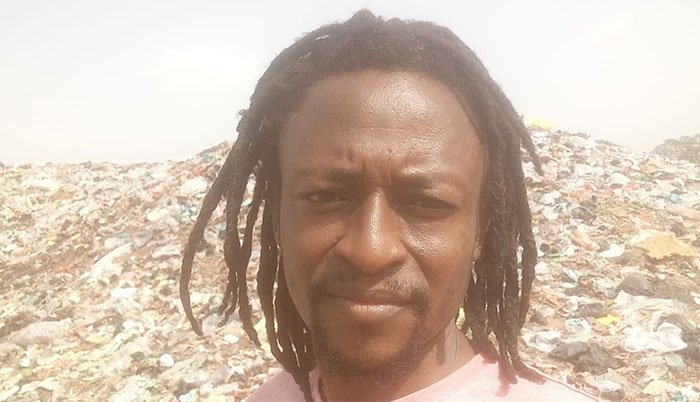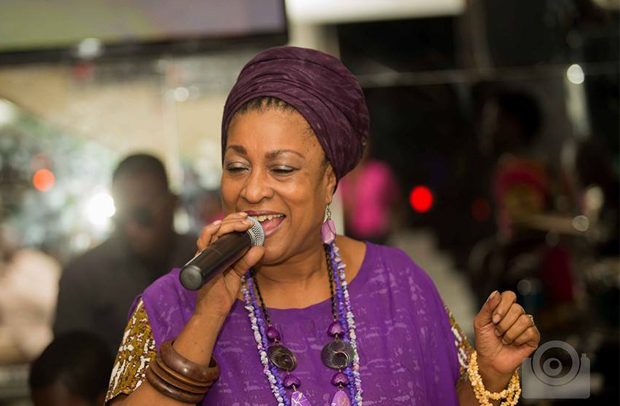
Ibrahim Mohammed aka Kaaka
The three-member committee which probed the mayhem that rocked Ejura in the Ejura/Sekyedumase District of the Ashanti Region on June 29, leading to the killing of two people and injuries to four others, following the death of Ibrahim Mohammed aka Kaaka, has indicted security agents for acting provocatively to escalate the violence.
The report said the committee had observed that the security agents adopted ‘knee-jerk’ approach in handling the situation.
According to the report, the dispatch of a police riot control vehicle (water cannon) to the Ejura cemetery escalated the violence, saying “this singular act, in the given circumstances on the ground, constituted an act of provocation.”
Untrue Position
According to the committee, their probe showed that the evidence given by both the District Police Commander and the Deputy Regional Police Commander to the effect that it was Kaaka’s family that requested for police protection for the burial of the deceased, could not have been true.
The report said “the Committee received evidence from the Military, the Police, the Media (namely Multi-media and Citi News) and the Chairman of REGSEC, as well as the Ejura Traditional Council. We have examined the evidence on record and we further find that, there was no need or justification for the dispatch of a Police Riot Vehicle (water canon) to the cemetery on the morning of the 29th of June.”
“Both the District Police Commander and the Deputy Regional Police Commander testified that, it was the family of ‘Kaaka’ who requested for police protection during the burial of the deceased ‘Kaaka’, the report said, adding “this piece of evidence was denied by the family members of ‘Kaaka’ who came to testify. When asked, both the Deputy Regional Commander and the District Police Commander could not tell the Committee the name and particulars of the said family member who made this request.”
Dairy of Action
“It is observed that, both the Diary of Action contained in ‘Exhibit D’, which is the docket built on the murder of ‘Kaaka’, and the Crime Scene Report on the murder of ‘Kaaka’ and the demonstration at Ejura tendered as ‘Exhibit C’ did not contain the name and particulars of any such family member who had made the request,” the report revealed.
“The Committee finds this piece of evidence as an afterthought. One wonders why the burial of ‘Kaaka’ should require Police protection. In the light of the events which happened on the 28th June, it would have been convincing, if the Riot Vehicle had been deployed at either the Police Station or the Municipal Assembly.”
Without Violence
According to the report, “Evidence before us tendered by both Erastus Asare Donkor of Multimedia and Edward Oppong Marfo of Citi News, clearly show that the burial of the deceased ‘Kaaka’ was without any violence until the arrival of the Police Riot Vehicle at the cemetery.”
“It is, therefore, our finding from the evidence before us that, the presence of the Riot Vehicle at the cemetery on the 29th of June was an act of provocation which incensed an already angry and violent youth, thereby culminating in the attack on the Police Riot Vehicle,” the report stressed.
Offensive Weapons
The report said the committee found that the youth in protesting on the 29th of June on the streets of Ejura, used offensive weapons like machetes, swords, cutlasses, clubs, sticks and stones, and said “we are convinced that these offensive weapons were not necessary for the voice or grievances of the youth to be heard.”
“In the circumstance where on the 28th June, the youth had vandalised part of the Police Station and other properties, it is expected that the security agencies should have been apprehensive of a similar conduct by the youth,” the report said, adding “this in our view, required a rapid response from the Police.”
“The District Commander of Police Ejura, in his testimony before the Committee stated that, he called for reinforcement from the Divisional Headquarters, Asante Mampong. The Deputy Regional Police Commander also stated that further reinforcement was sent from Kumasi to Ejura. The Committee wonders the nature of all these reinforcements. Examining the evidence of the Chairman of REGSEC (Regional Minister, Ashanti), and that of the Nifahene of Ejura Traditional Council, it appears to the Committee that, the reinforcement that the Police sent to Ejura from Mampong and Kumasi was inadequate and that they were under resourced for riot control on the 29th of June.”
The report said the committee found that as a result of the small number of police and the lack of adequate riot control equipment and gear, the police were overwhelmed, saying “this obviously gave room for the marauding youth to have a field day.”
Underestimating Youth
The report said the police underrated the capacity of the youth to cause mayhem, emphasising that “we note further that, the Police Administration in both the District and the Divisional levels underestimated the resolve of the youth, thereby creating an atmosphere of fear and panic.”
“A critical examination of the evidence tendered by the security officers who appeared before the Committee, clearly demonstrates that, there was no proper coordination in the handling of the situation by the Police,” it said.
Incompetent Police
It added that “there was no need for the security personnel who were deployed in Ejura to restore calm on the 28th June, to have left Ejura in the early hours of 29th June,” saying “the Committee finds that this created a security vacuum in the town. We are convinced that, having withdrawn the security personnel deployed on the 28th June from Ejura, the District Police Commander failed in his duty to adequately brief his superiors in the Divisional and Regional level to beef up the personnel and logistics in anticipation of any eventualities on the 29th June.”
“We note this because, if it was in fact true that the ‘Kaaka’ family requested for security during the burial of ‘Kaaka’, as alleged by the District Police Commander, that should have been an adequate signal to the District Commander to have immediately requested for the necessary logistics and men to deal with any unwarranted situation,” it said, adding “rather sadly, the District Commander decided to deploy the Riot Vehicle to the cemetery. We find this conduct of the District Commander to be incompetent and he was ill prepared for the occasion.”
The report also said that the testimony of the DCOP that the Police at Ejura visited the scene of the crime (Kaaka’s house), where he was assaulted on June 26, 2021, could not have been true because there was no evidence to back the claim, adding that “in the view of the Committee, the failure of the Police to act promptly on the complaint of assault on ‘Kaaka’ contributed to the rioting.”
No Intelligence
“The Committee further finds that, there was no proper security briefing and intelligence gathering and sharing. From the evidence of the Regional Minister who is the Chair of the REGSEC, it is obvious that the intelligence information he received caused him to authorise the deployment of the military. He claimed to have received information from some sources in Ejura. He deemed this information to be so vital and urgent that he ordered the deployment of the military immediately,” the report stressed.
According to the report, “if there was a proper sharing of intelligence information among members of REGSEC and their respective organisations, this ‘knee-jerk’ approach would not have been adopted in the handling of the situation on the ground,” adding “we note that, this escalated the situation and thereby provided grounds for the deployment of the Military.”
It said the situation escalated because the police did not work on their intelligence sharing, failed to prepare for the situation on the ground and over relied on the military personnel.
The committee noted that “from the evidence tendered by the security personnel to the Committee, one thing that was clear is that, all of them agreed that they had intelligence that the youth wanted to attack the Police Station, Municipal Assembly and other installations,” and said “if this intelligence were in existence, we are baffled that nothing more concrete was put in place to forestall the escalation of the situation than to rely on Military deployment, knowing that the Standard Operative Procedure (SOP) of the Military is such that they should not be used as a first line of riot control or crises management, but as a last resort.”
Military Action
The committee said all the evidence showed that immediately the soldiers touched down they started firing warning shots, contrary to the evidence of the GOC (Central Command) which was to the effect that, they gave a verbal warning which was ignored before the warning shots begun.
“The testimony of the Commander of the Section (ten men) that went to Ejura, on the 29th June, belie the testimony of the GOC (Central Command),” it said.
By Ernest Kofi Adu























Facebook
Twitter
Pinterest
Instagram
Google+
YouTube
LinkedIn
RSS